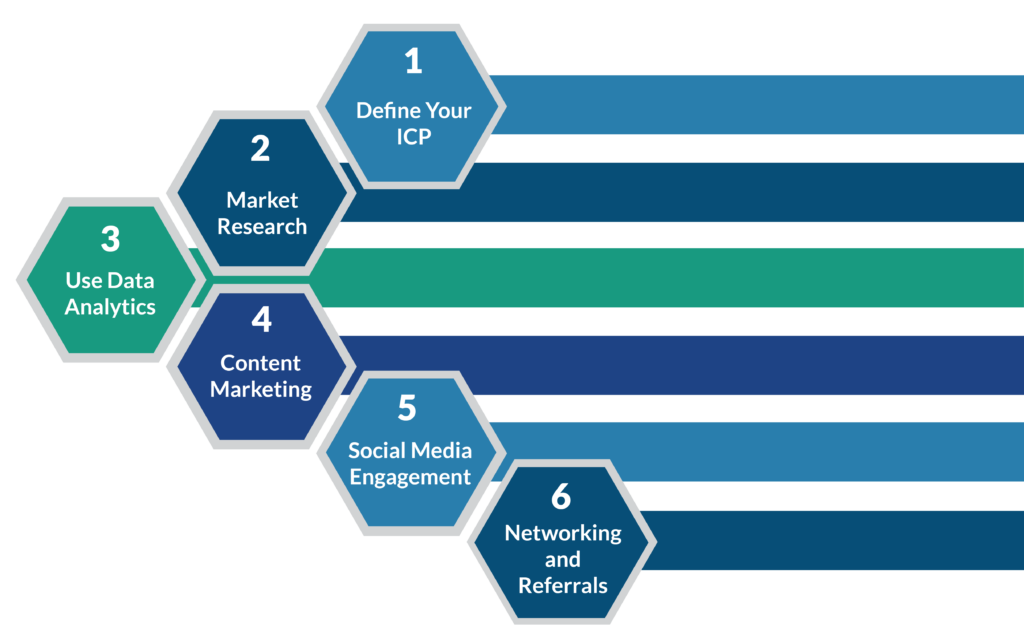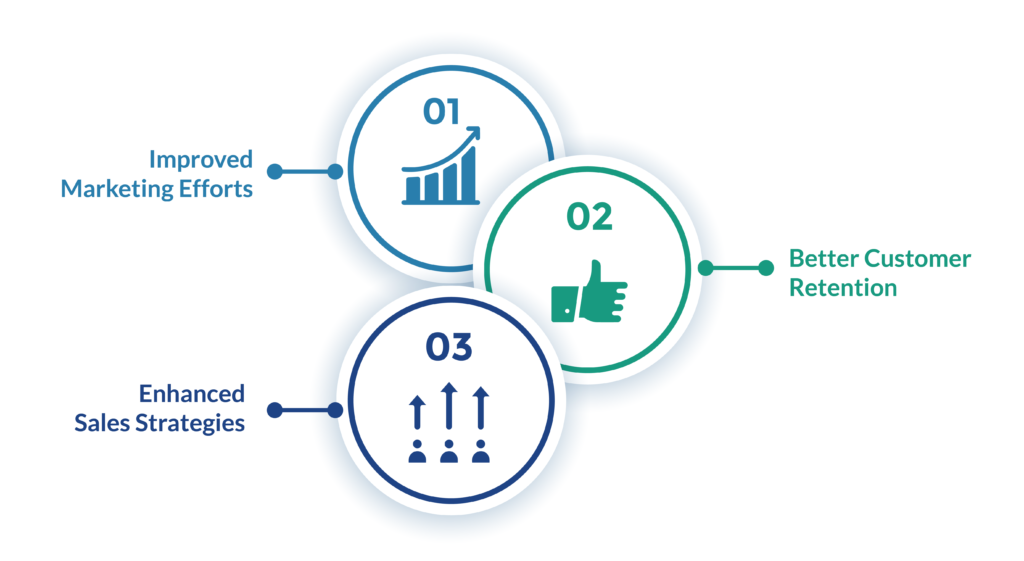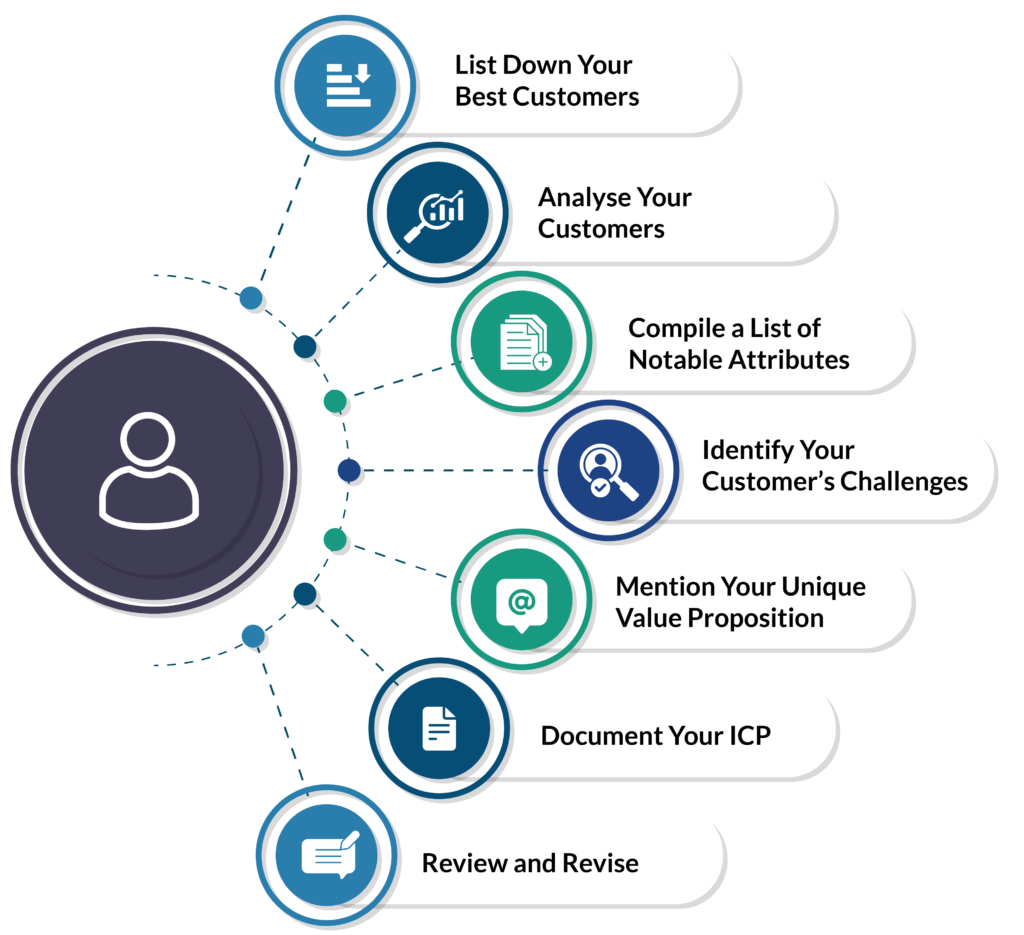In business strategy, the term “Ideal Customer Profile” (ICP) often appears as a crucial component of success. But what exactly is an ICP, and why is it so important? Let’s explore the concept of an Ideal Customer Profile and its significance in today’s competitive market.
What is an Ideal Customer Profile?
An Ideal Customer Profile (ICP) is a detailed description of the type of customer that would derive the most value from your product or service and, in return, provide significant value to your business. Essentially, it is a blueprint of the perfect customer that aligns with your company’s goals, values, and solutions.
An ICP typically includes demographic information, industry, company size, budget, purchasing behaviour, and other relevant data points that help identify the most promising prospects. Understanding and defining your ICP helps streamline marketing and sales efforts, ensuring that resources are focused on the most lucrative opportunities.
Components of an ICP
An ICP typically includes:

- Demographics: Demographics include age, gender, location, income level, and education. These basic details help you understand who your customers are.
- Firmographic Information: Company size, industry, revenue, and location.
- Technographic Data: Technology stack and software usage.
- Behavioural Traits: Purchasing behaviours, product usage, and buying triggers.
- Challenges and Pain Points: Specific problems your product or service can solve.
- Decision-Making Process: Who is involved in the decision, and what criteria do they use?
How Do You Find Quality Leads?
Finding quality leads involves a strategic approach integrating market research, data analysis, and customer insights. Here are some steps to identify and attract high-quality leads:

- Define Your ICP: Start by outlining the characteristics of your ideal customer. This includes industry, company size, location, pain points, and buying behaviour.
- Market Research: Understand the market demand and industry trends.
- Use Data Analytics: Leverage tools like CRM systems, Google Analytics, and social media insights to gather data about your current customers and prospects.
- Content Marketing: Create valuable content that addresses the needs and challenges of your ICP. This will attract prospects who are looking for your solutions.
- Social Media Engagement: Actively engage with your audience on social media platforms where your ICP is most active. Share content, participate in discussions, and build relationships.
- Networking and Referrals: Attend industry events, webinars, and trade shows to connect with potential leads. Encourage satisfied customers to refer others to your business.
Benefits of Having an Ideal Customer Profile

- Improved Marketing Efforts: With a clear ICP, your marketing campaigns can be more targeted and efficient. You can focus your resources on the most promising leads, resulting in higher conversion rates and better ROI.
- Better Customer Retention: By understanding your ideal customers, you can develop strategies to keep them engaged and satisfied. This leads to higher customer loyalty and reduced churn rates.
- Enhanced Sales Strategies: Sales teams equipped with an ICP can tailor their pitches to address potential customers’ needs and pain points. This personalisation increases the likelihood of closing deals and fostering long-term relationships.
Why Should an ICP be a Part of your Marketing Strategy?
An ICP should be an integral part of your marketing strategy because it:
- Aligns Marketing and Sales Efforts: Ensures both teams target the same type of high-value prospects.
- Improves Lead Quality: Helps identify and attract leads that are more likely to convert.
- Enhances Customer Retention: This strategy focuses on customers who are more likely to derive value from your product, leading to higher satisfaction and retention rates.
- Optimises Resource Allocation: Ensures marketing and sales resources are used efficiently, targeting the most promising opportunities.
What is a Buyer Persona?
A Buyer Persona is a semi-fictional representation of your ideal customer based on market research and accurate data about your existing customers. It includes detailed demographic information, behaviour patterns, motivations, goals, and challenges.
While an ICP focuses on the ideal company or customer type, a Buyer Persona dives deeper into the individual characteristics of the people within those companies. This includes their job roles, daily tasks, and personal goals.
Do You Need Both an Ideal Customer Profile and Buyer Persona?
An ICP and Buyer persona are crucial for a comprehensive marketing strategy. An ICP helps identify the best types of companies to target, while Buyer Personas help understand the specific individuals within those companies who are involved in the purchasing decision.
What’s the Difference Between Ideal Customer Profiles and Buyer Personas?
ICP: This approach focuses on the ideal company or customer. It includes company-wide characteristics such as industry, size, and budget.
Buyer Persona: This focuses on individual roles within those companies. It includes personal characteristics, job roles, goals, and challenges of the decision-makers.
Why is an Ideal Customer Profile Important?
An Ideal Customer Profile is important because it identifies your best customers and their needs. This insight helps you create targeted marketing campaigns, improve lead quality, and drive more sales.
4 Benefits of Creating an Ideal Customer Profile
- Speed Up the Sales Cycle: By targeting the right customers, you can streamline the sales process and reduce the time it takes to close deals. Your sales team will spend less time on unqualified leads and more on high-value prospects.
- Personalised Marketing: An ICP allows you to create more personalised marketing messages that resonate with your target audience. This increases engagement and improves the effectiveness of your campaigns.
- Increase Customer Lifetime Value (CLV): Focusing on high-value customers who are a good fit for your product or service can increase customer loyalty and lifetime value. These customers are likelier to repeat purchases and recommend your business to others.
- Help with Account-Based Marketing: Account-based marketing (ABM) is a strategic approach targeting high-value accounts. An ICP provides the foundation for ABM by identifying the companies that are most likely to benefit from your product or service.
How to Create an Ideal Customer Profile in 7 Steps
Before You Start
Before creating your ICP, gather as much data as possible about your existing customers. This includes demographic information, purchasing behaviour, and feedback.

- List Down Your Best Customers: Identify your customers based on revenue, retention, and engagement. These customers will serve as the foundation for your ICP.
- Analyse Your Customers: Analyse the characteristics of your best customers to identify common traits. This could include industry, company size, location, and budget.
- Compile a List of Notable Attributes: Compile a list of attributes that define your best customers. This could include budget, decision-making process, pain points, and goals.
- Identify Your Customer’s Challenges: Understand your customers’ challenges and pain points. This will help you tailor your messaging and solutions to address these issues effectively.
- Mention Your Unique Value Proposition: Clearly describe your unique value proposition (UVP) – what sets your product or service apart from the competition. Ensure it aligns with the needs and challenges of your ICP.
- Document Your ICP: Create a detailed document outlining your ICP. Include all your identified characteristics, and ensure they are accessible to your marketing and sales teams.
- Review and Revise: Review and revise your ICP regularly to ensure it remains accurate and relevant. As your business grows and market conditions change, your ICP may need to be updated.
How to Use Your ICP for Better Lead Scoring
Lead scoring assigns a value to each lead based on their likelihood to convert. An ICP can help improve lead scoring by clearly understanding the characteristics defining high-quality leads.
How to Build an Ideal Customer Profile
What Do You Do Best?
Identify your core strengths and unique selling points. Understanding what you do best will help you identify the customers most likely to benefit from your product or service.
Who Are Your Best Customers?
Look at your most successful accounts and identify common characteristics. These customers will serve as the foundation for your ICP.
What Does Your Customer Feedback Say?
Customer feedback provides valuable insights into what your customers value most about your product or service. Use this feedback to refine your ICP and ensure it aligns with your customer’s needs and expectations.
What if You’re a Brand New Business?
You may not have existing customers to analyse if you’re a brand-new business. In this case, use market research and competitor analysis to identify potential customers who fit your ICP.
Ideal Customer Profile Example
An ideal customer profile example can clearly explain how to structure your ICP. Here’s an example:
Company Name: XYZ Corporation
Industry: Technology
Company Size: 100-500 employees
Location: London
Annual Revenue: $10 million – $50 million
Pain Points: Struggles with data management and security
Goals: Improve data security, streamline operations, and reduce costs
Decision-Maker: Chief Information Officer (CIO)
Unique Value Proposition: Our solution offers advanced data security features and easy integration with existing systems, helping XYZ Corporation achieve its goals efficiently.
Ideal Customer Profile (ICP) For Account-Based Marketing (ABM)
An ICP is essential for account-based marketing (ABM) as it helps identify the high-value accounts most likely to benefit from your product or service. Use your ICP to create targeted campaigns and personalised messaging for these accounts.
Here are some examples of ICPs for different industries:
Example 1: SaaS Company
Company Name: ABC Software
Industry: Software as a Service (SaaS)
Company Size: 50-200 employees
Location: West Midlands
Annual Revenue: $5 million – $20 million
Pain Points: Difficulty managing customer data
Goals: Improve customer data management and enhance user experience
Decision-Maker: Chief Technology Officer (CTO)
Unique Value Proposition: Our software offers robust data management features and a user-friendly interface, helping ABC Software achieve its goals efficiently.
Example 2: E-commerce Business
Company Name: XYZ Retail
Industry: E-commerce
Company Size: 20-100 employees
Location: North West
Annual Revenue: $2 million – $10 million
Pain Points: Struggles with order fulfilment and inventory management
Goals: Improve order fulfilment processes and optimise inventory management
Decision-Maker: Operations Manager
Unique Value Proposition: Our solution offers advanced order fulfilment and inventory management features, helping XYZ Retail achieve its goals efficiently.
ICP in Different Business Models
B2B vs. B2C ICPs
While B2B ICPs focus on company characteristics, B2C ICPs are centred on individual consumer traits. Each model requires a different approach to creating and implementing an ICP.
ICPs in Startups vs. Established Companies
Startups may need to modify their ICP more frequently as they discover their market fit. Established companies, on the other hand, can leverage historical data to refine their ICPs.
Common Mistakes to Avoid
- Overgeneralising Your Audience: Avoid creating an ICP that is too broad. Focus on specific characteristics that define your ideal customers.
- Ignoring Customer Feedback: Customer feedback is a valuable resource. Ignoring it can lead to an inaccurate ICP that doesn’t resonate with your target audience.
- Ignoring Data: Base your ICP on solid data rather than assumptions or facts.
- Failing to Update Your ICP: Your ICP should evolve as your business and market change. Please update it regularly to avoid missed opportunities.
FAQs
What is the main difference between a buyer persona and an ICP?
A buyer persona focuses on individual customer characteristics, while an ICP describes your product or service’s ideal company or customer segment.
How often should an ICP be updated?
An ICP should be reviewed and updated regularly, mainly when significant market or customer base changes exist.
Can a business have more than one ICP?
Businesses often have multiple ICPs to target different market segments or product lines.
What tools can help in creating an ICP?
Tools like CRM software, market research platforms, and data analytics tools can provide valuable insights for creating an ICP.
How does an ICP affect content marketing strategies?
An ICP helps tailor your content marketing efforts to address your ideal customer’s needs and interests, resulting in more effective and engaging content.
Conclusion
Creating an Ideal Customer Profile (ICP) is essential for any business looking to improve lead quality, streamline marketing efforts, and drive sales. By understanding the characteristics and needs of your ideal customers, you can create targeted campaigns, improve customer retention, and achieve your business goals more efficiently. Use the steps and examples in this article to make your ICP and take your marketing strategy to the next level.
